The Audio-Visual Record of a Brutalized Nation
posted August 15, 2011 1 Comment
![]()
In Rwanda, the Iriba Center aims to preserve events burned into the memories of a decimated population – you have until August 21 2011 to help kickstart its fundraising.
n
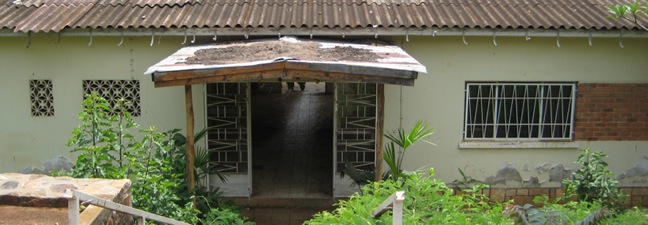
n
Rwanda has been far from alone in experiencing the horrors of genocide during the last several decades. The world has often turned away from sights almost too horrendous to contemplate or imagine.
But in the African nation, citizens have been unable to close their eyes to what surrounded and assaulted them during the brief, brutal genocide of 1994.
That year, thousands of members of the majority Hutu ethnic group perpetrated vast massacres, targeting minority Tutsis as well as moderate Hutus. The killings were the bitter harvest of many years of tensions that governments and other powerbrokers within both ethnic groups had fomented. Also implicated, of course, were European colonizers, particularly Belgium, which by policy exacerbated ethnic divisions during the 19th and 20th centuries.
During a three-month bloodbath, vast numbers of Rwandans died – perhaps as many as 800,000, or a staggering one tenth of the country’s population of 8 million, and well over one-half of its Tutsi population.
Now, in Rwanda, efforts are under way to advance a long, painful process of national healing by creating an audio-visual record of those events – in fact, of the whole of Rwandan history during the years of audio-visual recording. That is the goal of American-French filmmaker Anne Aghion, her colleagues, and an array of foundations and other supporters who are setting up the Iriba Center for Multimedia Heritage, a new archive forming in the high-altitude nation in the Central East of the continent.
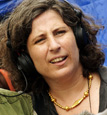
At Iriba, whose name means “the source,” staff are collecting films, photographs, and audio recordings of the last century and more, from sources in African and Europe.
And they are looking for funding and other assistance, to make their work possible. The French Embassy in Kigali, the Rwandan capital, has donated a building that will house the center’s screening stations and its classes and group programs. Aghion and her colleagues, particularly Assumpta Mugiraneza, a social psychologist and political scientist trained in France, also plan to present film programs in rural communities, where most Rwandans live.
“Rwanda is still a very rural country,” says Aghion, by phone from Paris. “So there will be a mobile unit that goes around the country and that makes these documents and images available, beyond the capital. The people in the countryside, who are really the most disenfranchised and poor people in the country, will still have access to all that history.”
The archive will be available only in Rwanda. “This is for Rwandans to connect with their history,” says Aghion. “Bear in mind that this is a country where a lot of people don’t read. A lot of people don’t know how to read, and even the ones who do don’t necessarily read. So audiovisual stuff is important. It’s a way for them to connect with their historical past.”
The archive will cover all of Rwandan history, but with an inevitable emphasis on the genocide that nearly destroyed the country. Aghion has been working to preserve that history for 11 years. She spent a decade in one small mountain hamlet, a community of about 1,000 people, creating most unusual documentation of how they dealt with the genocide.
Aghion was already an experienced filmmaker when she went to Rwanda. At the 1996 Havana Film Festival, her first film, Se Le Movio El Piso (The Earth Moved Under Him) — A Portrait Of Managua, won an award for best documentary on Latin America made by non-Latinos. It depicted how slum dwellers in Nicaragua’s capital coped with natural, political, and economic disasters.
Recently, she has also made Ice People (2008), for which she headed off into the “deep field” of Antarctica for four months with noted geologists Allan Ashworth and Adam Lewis. She filmed them scouring hundreds of miles to find minute signs of ancient life; they provided evidence that the continent was green, over 14 million years ago, but froze over when the land mass rapidly chilled.
A dual resident for most of her life of New York and Paris, Aghion started out in newspaper editorial and administrative roles with the New York Times Paris bureau and the International Herald Tribune before moving into film and television production. There, she worked in videography, production, and post-production with Richard Leacock, the British-born documentarian and pioneer of “Direct Cinema” and “Cinéma vérité,” and with French documentarian Valérie Lalonde, as well as on documentaries on Canal+, ARTE, and other cable networks. She also spent time as director of international production and development at Pixibox, Europe’s leading digital-animation company.
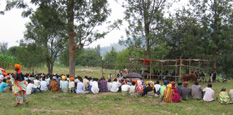
In 2001, the Rwandan government announced a justice-and-social-reconstruction campaign for the country. Aghion decided to be a witness in Rwanda to the long, grueling process. “Initially I was interested in how people live together again. You might call it personal testimonies, but it’s not just that,” she says. “What attracted me to Rwanda was that the Rwandans decided to put into place a system of participatory justice, the “Gacaca” [pronounced ga-CHA-cha], which had a promise that these were going to be village courts, where everyone would come together and build a narrative that everyone could agree on. Of course the Gacaca did not start right away, so I ended up making four films.”
In the hillside hamlet, Aghion followed what happened during the experiment in moving on from events that might have festered for decades. She witnessed survivors’ and perpetrators’ fear, anger, accusations, and defenses. The trials were held in the open air – “Gacaca” means “justice on the grass.” Like participants, Aghion heard statements steeped in sadness that surely could never heal; she heard others from accused perpetrators whose veracity was impossible to gauge; and yet she also heard expressions of hope that the people of the community could somehow continue to live, and to live together.

Under the Gacaca system, long-imprisoned perpetrators of the genocide who had confessed to their crimes were given provisional freedom to attend the hearings. As long as they had already served prison sentences as long as those the citizen judges of the Gacaca Tribunals imposed, they were allowed to reënter the communities where they had taken part in the slaughters. Survivors were asked to try to forgive the killers.
Among the first acquisitions of the Iriba Center are some 350 hours of footage that Aghion shot during the next decade. It was the raw material for four acclaimed films she would make, beginning with My Neighbor My Killer. Such filming was, of course, never going to be anything but traumatizing, as well as bureaucratically challenging. But Aghion’s films had a profound impact when shown on television and at festivals and other venues around the world – Cannes, the Museum of Modern Art in New York, Cambodia, Kenya, Turkey.
The title of My Neighbor My Killer referred to events during the massacre where local patrols massacred neighbors, and even lifelong friends and family members, with machetes and improvised weapons. Rather than dwell on statistics and the opinions of politicians and aid workers, Aghion let survivors and accused killers speak in her film. The result was an extraordinary document. The Los Angeles Times’ Kenneth Turan hailed it as “quietly devastation.” In The Washington Post, Ann Hornaday called it “deeply moving.” Agence France Presse considered it “an historic document of incalculable value, but also a superbly shot work of cinema.”

It was named best documentary at the 2010 Montreal International Black Film Festival, and an official selection at the 2009 Cannes Film Festival. It also won Human Rights Watch’s 2009 Nestor Almendros Prize for courage in filmmaking.
Calling her film company Gacaca Films, Aghion went on to make a trilogy of other films about the aftermath of the genocide in the hamlet. The first, Gacaca: Living Together Again in Rwanda won the 2003 Unesco Fellini Prize, awarded annually to directors and actors in recognition of contributions to the respect and promotion of cultural diversity. The film portrayed the first steps of the Gacaca process.
Aghion’s In Rwanda we say… The family that does not speak dies, which won an Emmy Award in 2005, showed what happened when one among thousands of suspects of appalling crimes returned to his home to live beside people whose family members he was accused of murdering. The film captured a range of responses from residents of the hamlet. Aghion says she found that initial responses, from numb accommodation to barely suppressed rage, astonishingly gave way to acceptance as neighbors dared to speak to each other of their grief, guilt, and other emotions.
The last installment of Aghion’s trilogy was The Notebooks of Memory, which appeared in 2009. It focused on four years of tribunals where local citizen judges weighed survivor accounts against confessions that perpetrators made in the open-air village courts.
As Aghion says, “the trials informed the interviews, and the interviews informed the trials.” Her projects, in that way, became part of the process of reconstruction. And, in the course of those 10 years, “I spent filming in that one small community,” says Aghion, “I accumulated a unique archive, a longitudinal study, as it were.”
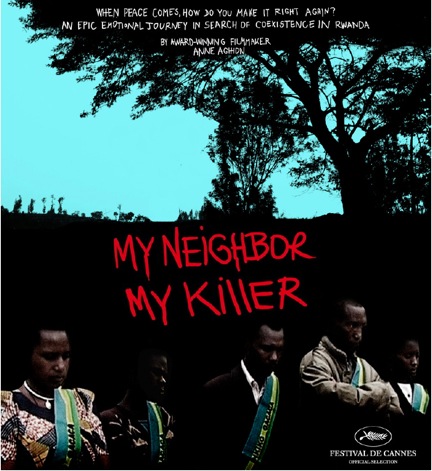
In all Aghion’s footage, villagers spoke to her in the country’s principle language, Kinyarwanda; (educated citizens, particularly those who work in administrative roles, more and more commonly speak English, too, in preference to French, the language of colonial times). While Aghion’s films are subtitled, her additional raw footage is not; but she had virtually all of it translated into French with time codes so that she and her editor would be able to cut her films. “It’s a very rough and word-for-word translation, but it means that it’s accessible to non-Kinyarwanda speakers,” she says.
For some time, she has been looking for ways to place her archive somewhere. “It hasn’t been easy,” she says. “There has been a lot of interest, but I want to be sure that there’s enough money at whatever institution it goes to, to take care of it, for it not to sit in a corner.
“I’m interested in finding a home for the originals of the footage to be preserved, probably at a U.S. or European institution – a university library, or other large library or archive. Iriba will only have a digitized copy, for consultation.”
The extraordinary geographical concentration and painstaking thoroughness of Aghion’s project are among its many outstanding qualities. It is a longitudinal study of a rare kind. Aghion knows well that, as she says, “a lot of researchers are waiting for it to be some place and to be available.”
n
Filming went on all around Rwanda in the aftermath of the genocide, but the Iriba Center’s collection, with Aghion’s footage as well as older historic footage drawn from many national archives, will differ from another effort to construct an audio-visual record of the Rwandan genocide. Taylor Krauss, a 2002 Yale University graduate, has for five years been interviewing and filming survivors of the massacre. In 2006, he founded Voices of Rwanda, a nonprofit organization, to collect the testimonies of survivors for a video archive.
After Yale, Krauss worked as an archivist for Ken Burns and Lynn Novick’s seven-part series about World War II, The War, which aired on PBS in 2007. He began going to Rwanda in 2004, and in 2005 he gathered a staff of seven Rwandans and began filming more than 1,000 hours of survivors’ testimony.
The Voices of Rwanda project records oral histories of survivors’ lives, from childhood to the present, some of them several hours in length, and in a set format. Witnesses also provide context in the form of family history and such cultural expressions as proverbs and songs.
Aghion’s method was different, and “not at all memorializing,” as she says. Together with historic footage, it will provide a database for Rwandans to reconnect with a colonial past of far greater length than the genocide, but with many commonalities.
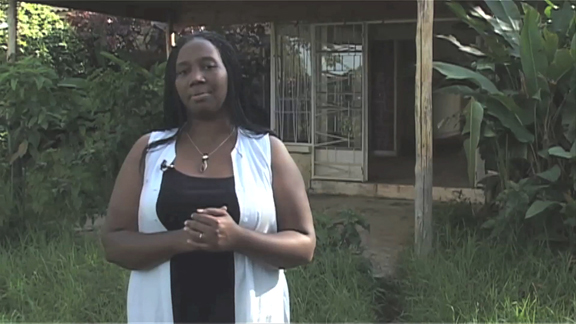
Assumpta Mugiraneza will eventually direct the Iriba Center, and at the moment is in charge of its undertaking to find answers to a question that is, in Rwanda, overwhelmingly difficult and fraught: “How do you think about the history of a genocide, about how you build that legacy, as it were?” as Aghion puts it. “We decided a while back that this was an important thing to do.”
Neither she nor Mugiraneza is an archivist; so, archivists are among many kinds of helpers whose assistance they are seeking as they build their center. They are, they admit, working to edge the Iriba Center to the point where a variety of professionals and supporters permit them to run the organization as a going concern.
As they looked around for models for how to do that, Aghion and Mugiraneza came last year upon the Bophana Center, run in Cambodia by filmmaker Rithy Panh. He invited Aghion and Mugiraneza to Phnom Penh. Says Aghion: “The two of us, Assumpta and I, went to Cambodia last July and saw what Riti Panh had done, and we decided that part of what he’d done was the right model for us.”
So, they have undertaken to gather audiovisual documents pertaining to the history of Rwanda in general and to make them available in a database and on work stations, in the center.
Now that the center has a building, albeit one that requires a good deal of renovation, fundraising is, of course, the key to the project. Among approaches Aghion and Mugiraneza are taking is to sign on for an online “crowd-funding” campaign via Kickstarter. That organization’s fundraising web site is an all-or-nothing deal: Donors make pledges, but their credit cards are not charged unless the project reaches a set level – in the case of the Iriba Center, $40,000.
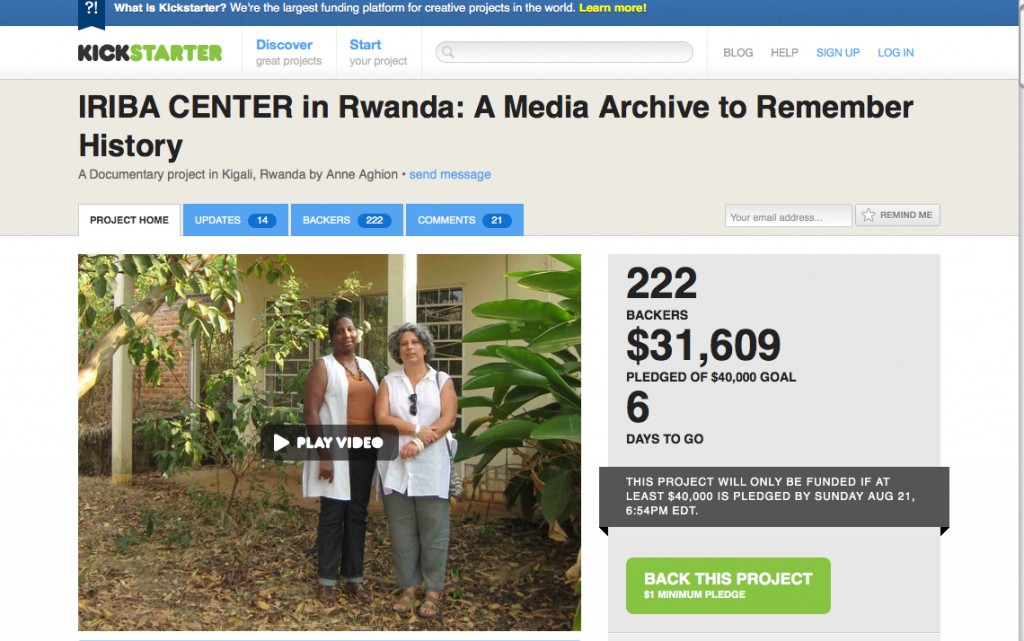 And there is a deadline: for Aghion, Mugiraneza, and their colleagues, it is August 21; if they do not reach their goal by then, they get none of the pledged money. The mechanism is designed to ensure that the potential donors are relieved of their money only when projects have enough support to move forward.
And there is a deadline: for Aghion, Mugiraneza, and their colleagues, it is August 21; if they do not reach their goal by then, they get none of the pledged money. The mechanism is designed to ensure that the potential donors are relieved of their money only when projects have enough support to move forward.
Recently, Aghion and Mugiraneza learned that their project would receive a grant of $35,000 from Oxfam-Novib, a Dutch affiliate of Oxfam that has worked in Rwanda for many years in support of civil-society projects, including Aghion’s film work. If the Iriba Center also reaches its $40,000 Kickstarter goal, then “we will be able to move in a very concrete way to launch Iriba Center,” Aghion said in a dispatch on the organization’s Kickstarter site. They will, she says, “be able to hire professional consultants to help us set up legal, financial, and administrative systems of governance for the Center, to help us research and gather archival materials and to assist us in adapting the database that Bophana Center has given us.”
Also possible, she says, would be to take various other steps towards becoming a viable operation.
She and her colleagues have not, however, been waiting for financial support before moving on their project. They have been negotiating with national and private archives to try to obtain the rights for Rwanda to the archives’ footage, still images, and other material. Aghion’s footage will eventually be only a small part of the center’s collection, she hopes.
Iriba staff are looking to such international institutions as the Tervuren Royal Museum for Central Africa in Belgium and the Institut national de l’audiovisuel in France for material. What’s out there? “We have a little bit of a sense,” says Aghion. Material is held in Belgium, the colonial power, and in another former colonial power of Africa, Germany. “We think there are things at Catholic church archives, but we’re not sure how we’re going to access that. There are things also in Rwanda in the religious missions. We’re in talks with a Polish religious mission, which is one of the oldest in the country, about getting their documents and making them available.”

Thanks to their fundraising campaign, photographers and filmmakers have undertaken to give the Iriba Center copies of their work. Says Aghion: “We think there are a lot of private archives, also, and once we get going people will come forward with their material, once they hear about us. We figure it will take four or five years, to know pretty much what is out there. And a good chunk of it will be digitized and available.”
It will be available just in Rwanda, and not online. “The idea is really to gather audiovisual documents pertaining to the history of Rwanda in general and make them accessible in Rwanda at workstations on a database, in the Iriba Center,” says Aghion.
 “We’ve been thinking about this for a while, and we’ve been talking to funders in Rwanda and outside Rwanda and we’ve been given this house. We felt that we wanted to move forward, and that’s why we decided to do this campaign. We felt we could give a signal not just to the institutional funders who often take time to make up their minds; this was also a way for us to come out in the world and say, we’re doing this, and to do it a little bit with a bang.
“We’ve been thinking about this for a while, and we’ve been talking to funders in Rwanda and outside Rwanda and we’ve been given this house. We felt that we wanted to move forward, and that’s why we decided to do this campaign. We felt we could give a signal not just to the institutional funders who often take time to make up their minds; this was also a way for us to come out in the world and say, we’re doing this, and to do it a little bit with a bang.
“And it’s also a way for us to rally support, to carry us through the next months until we get bigger money from institutional funders within Rwanda and outside.”
– Peter Monaghan
Previous Post: Jungleland Revisited
Next Post: Filming the Aftermath of Genocide

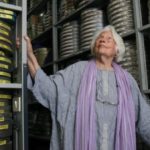
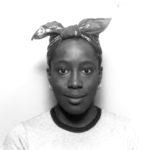
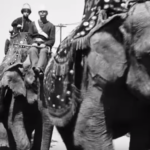
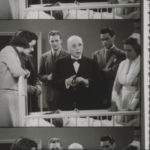

what an interesting program and task you have put in place and running. Its been long overdue that measures in most African countries had to be put in place to tame the “information divide” that has existed for long. the communities have become alienated from their own historical and cultural heritage. I hope other nations will follow in the footsteps of this project and do the same to equip the masses. I’m of the notion that it is only through collaboration and creating working partnerships with various institutions concerned with archival collections, management and preservation that the national archival institutions in Africa can effectively and efficiently carry out their mandates. setting up frameworks and strategies that will promote use of materials that might be held by private individuals and organizations by the greater community. Total physical migration of the migrated materials in colonial countries may not be the solution taking into account the possible existence of lack of financial stamina for their upkeep and the required tools and equipment and the purpose built housing facilities. But if there can be strategies to improve their accessibility irrespective of their location e.g. access to digitized content will be welcome